LightSquared/GPS Update
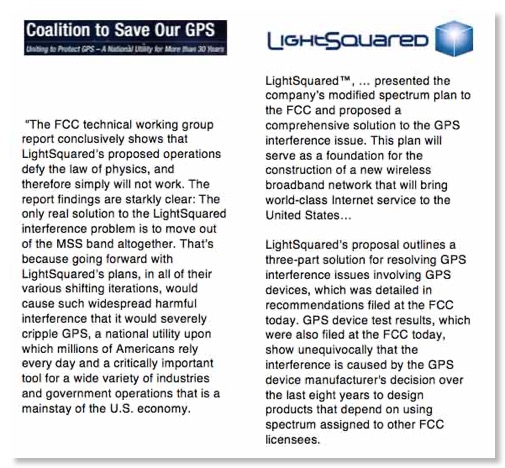 The spectrum management experts on the House Appropriation Committee have stepped into this battle, no doubt at the urging of the masses of lobbyists and PR agents involved. Broadcasting & Cable reports that
The spectrum management experts on the House Appropriation Committee have stepped into this battle, no doubt at the urging of the masses of lobbyists and PR agents involved. Broadcasting & Cable reports that Certainly the FCC has not proceeded brilliantly in this area, but despite the cries of the GPS community of bias, the real reason is just that the FCC (and NTIA for that matter) is presently poorly equipped to handle complex technical policy that lie outside of its past experience.“Republican Reps. Steve Austria (Ohio) and Kevin Yoder (Kan.) introduced the amendment, which would prevent the FCC from spending any money to permit the service "until the Commission has resolved concerns of potential widespread harmful interference by such commercial terrestrial operations to commercially available Global Positioning System devices."
Thus FCC did an outstanding job on the technical aspects of the DTV transition because it was a natural evolution of its strong traditional areas. FCC did a poor job on the Northpoint/MVDDS issue because of lack of related experience and resources until Congress (at DirecTV’s mischievous urging) forced it to hire an outside analysis.
Rather than micromanage ongoing spectrum policy deliberations, perhaps the Congress should ask why FCC does no have the technical resources to handle such policy deliberations and ponder the implications of long drawn out spectrum policy fights on capital formation for innovative technology?
Could the GPS its industry use its prodigious lobbying power for long term technical improvement at FCC or only in a selfserving way?
Meanwhile, our friends over at FierceWireless have a good report on the latest spats between LightSquared and the GPS advocates. The report on LightSquared initial proposal has finally been released and a new battle of press releases has begun.
In case anyone wants to read the actual report, here it is:
(Part 1) (Part 2) (Part 3) (Part 4) (Part 5)
The LightSquared release quoted at the top is here.
The Coalition to Save Our GPS release quoted at the top is here.
UPDATE
While the GPS crowd is throwing their weight around, maybe they should consider siding with NARUC on the technical expertise area at FCC. Fast Net News has an interesting piece on NARUC and FCC technical staffing. In part:
“18 out of 20 of the top people at the FCC are "policy" people, mostly lawyers. The very few technical people even near the top are generally excellent but are treated like garbage and generally ignored. They are almost never in the room when decisions are made. For years, there was no Chief Technologist nor Technology Advisory Committee.”
Indeed, today there is a TAC, but it continues to avoid current policy issues - unlike its counterparts at other regulatory agencies - and seems to be a major industry channel into the Commission - as if they need another one.
"A Cure for the (Broadcast) Radio Industry" - NYTimes
I have been a fan of the The New York Times’ David Pogue for a long time. He always writes witty and accurate pieces about the latest IT gadgets and trends. The above piece appeared recently on The Times website and deals with a possible evolutionary path for radio broadcasting, which is not doing well in the Internet age. The broadcasting establishment tried HD Radio as as way to breath life into AM/FM. Thinking that the problem with AM stereo was the way FCC failed to pick a standard, they bullied FCC into picking a standard for HD Radio. Of course, they failed to notice that AM stereo was a worldwide failure - failing even in countries and regions where Soviet-style planning decisively picked a standard. HD Radio may well be heading to the same fate.
The video above describes DAR.fm, a new website that overs a web-based Tivo-like service for hundreds of AM and FM stations. Pogue is optimistic that this service could stimulate demand for content from existing radio stations. Note, however, that NAB seems more interested in their weird attempt to force the CTIA crowd to put broadcast radio receivers in cell phones. We haven’t heard anything about that in a while, perhaps the Congress that is mad about Obama allegedly mandating a phase out of incandescent light bulbs (Bush 43 actually signed the legislation with bipartisan support) is also wary about a new mandate on consumers.
Agreeing with CTIA: Eshoo Bill is Solution to Nonproblem
“We are concerned that the bill proposes to add a new layer of regulation to a new and exciting set of services, while ignoring the fact that wireless is an inherently complex and dynamic environment in which network speeds can vary depending on a wide variety of factors. Congress should resist calls to impose new regulations and instead focus on the real issue, which is making sure that America’s wireless carriers have sufficient spectrum to lead the world in the race to deploy 4G services.”
Readers may think your blogger has a hatred of CTIA because they are often criticized here. The criticism is because of a fundamental disagreement on several issue like prison jamming, information about cell phone safety, indifference to physical appearance of base stations in populated areas, and cell phone use while driving issues. But I admire many other positive aspects of CTIA and its activities.
In this case, CTIA and I agree on a new bill, “Federal Communications Commission Process Reform Act of 2011”. The House Subcommittee on Communications and Technology majority (Republican) staff have circulated this summary of the bills new provisions:
New section 5A(d)—Bipartisan Initiation of Items. Requires the Commission to establish procedures to allow a bipartisan majority of Commissioners to put an item on the Commission’s agenda.
New section 5A(e)—Publication of Reports and Ex Partes. Requires the Commission to seek comment on reports and establish procedures for giving the public an opportunity to evaluate ex parte filings before the Commission may rely on them.
New section 5A(f)—Pending Item Publication. Requires the Commission to establish rules regarding the publication of a list of the draft items the commissioners are currently considering.
New section 5A(g)—Shot Clocks. Requires the Commission to establish shot clocks for each type of proceeding it oversees.
New section 5A(h)—Release of Documents and Reports. Requires the Commission to release reports according a schedule it has established, and all orders within seven days of adoption. The Commission must report to Congress whenever it misses its own deadlines.
New section 5A(i)—Biannual Scorecard. Requires the Commission to report every six months regarding its progress meeting its shot clocks.
New section 5A(j)—Transaction Review Reform. Preserves the Commission’s ability to review transactions but requires conditions to be: (a) narrowly tailored to remedy harms that arise as a direct result of the transaction and (b) requirements that the Commission could otherwise impose under its rule making authority. The same requirements apply to “voluntary” commitments.
New section 5A(k)—Communications Marketplace Report. Requires a biennial report to Congress giving a big-picture view of what’s happening in the industry, the challenges for jobs and economic growth, and the Commission’s agenda to address those issues.
The FCC’s actions are governed by the same Administrative Procedures Act and Government in Sunshine Act as the rest of the federal government, including the other regulatory Commissions. Many of these issues are addressed under existing legislation that is not followed particularly well. What is the need for FCC exceptionalism here?
I am sorry Comm. Copps is so upset about the Government in Sunshine Act. But the Commission under present laws and regulations have the authority to meet privately to discuss certain topics. There has not been such a closed meeting in nearly a decade. The comity among commissioners thus is not a result of the current law but of a major breakdown on the 8th Floor that can not be legislated away.
The one point I would agree with is the “shot clock” issue. The Commission has consistently ignored Section 7 of the Communications Act ever since it was passed in 1983, while it does have a “shot clock” for corporate mergers which have no legal deadline.
GPS/LightSquared: Round 2 Begins
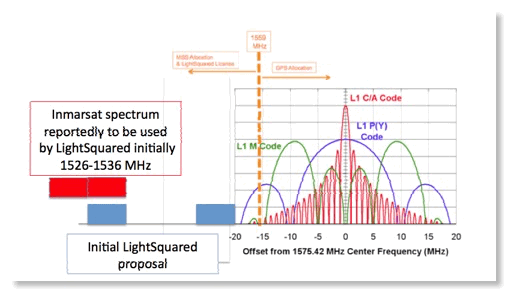
This week Round 2 of the GPS/LightSquared struggle opened with a change in LightSquared initial operating plans after yet unpublished, but widely leaked, test results indicated some interference to the incumbent population of GPS receivers.
LightSquared announced on Monday
After assessing this information, LightSquared immediately began developing an alternative deployment plan focused on the lower block of spectrum to launch its nationwide wireless broadband service. It also entered negotiations with Inmarsat, the satellite company that controls the alternative block of spectrum in the L Band, to accelerate the schedule for LightSquared to begin using the frequencies.
(Note that this change did not deter LightSquared from its regular full page ads in the Washington Post that deal with the benefits of their planned service but never mention the GPS controversy.)
Wireless Week reports that the actual spectrum involved in the new plan is 1526 MHz to 1536 MHz as shown above in red. Wireless Week add that “Even with the fixes, however, LightSquared’s network is still likely to affect precision GPS systems used by the military, aviation industry and agriculture.” Note that there are now 23 MHz between the upper end of the band LightSquared plans to use and the lower end of the GPS band.
The GPS community was not very conciliatory about the news. Jim Kirkland, Vice President and General Counsel of Trimble said on the Save Our GPS website:
“This latest gambit by LightSquared borders on the bizarre. Last week LightSquared unilaterally delayed filing of the study report that culminated months of intensive work to evaluate interference to GPS, because they purportedly needed two more weeks to analyze the results. Days later, well before the report is scheduled to be filed, LightSquared unilaterally announces that it has found a ‘solution.’
“LightSquared’s supposed solution is nothing but a ‘Hail Mary’ move. Confining its operation to the lower MSS band still interferes with many critical GPS receivers in addition to the precision receivers that even LightSquared concedes will be affected. The government results submitted to date already prove this, and the study group report will also confirm this. It is time for LightSquared to move out of the MSS band.
This is interesting because the GPS industry cheering group, PNT Advisory Board, heard on June 9 from FAA’s Deane Bunce, Co-chair National PNT Engineering Forum (NPEF) , the following mitigation options:

Thus the FAA is being more open minded than the GPS manufacturers. It will be interesting when the detailed test results of the joint testing are released. There are hints of wide variability in GPS receiver susceptibility, probably due to odd filter choices used in the receivers.
The public interest-based solution to this problem probably will involve 3 phases:
1. An initial phase where LightSquared must design their system to protect all safety-related GPS uses, e.g. military uses and aviation-related uses, and most nonsafety-related uses in reasonable circumstances.
2. A middle phase in which FCC in cooperation with other agencies creates an environment to improve the GPS receiver population on a slow and deliberate basis. This could include improved mandatory standards for safety-related uses such as aviation uses even though FAA to date has kowtowed to AOPA and have never fully implemented analogous ICAO Annex X standards for ILS receiver immunity. For nonsafety related systems either a regulation, which FCC does not have legal authority for at present, or a labeling requirement indicating the interference susceptibility of the receivers in certain scenarios.
3. A final phase in which greater use of the MSS band is allowed subject to power flux density (pfd) limits based on separation from the GPS band.
Note the inclusion of pfd limits here. FCC has historically limited transmitters based on effective radiated power (e.r.p.) or effective isotropically radiated power (e.i.r.p.), measures of power leaving the antenna. This is a historic relic of when frequencies were very low, wavelengths were very long, e.g. 200m, and antennas had little gain. Interference is actually related to power at the receiver’s antenna which is more closely related to pfd. At the frequencies involved here clever antenna designs can lower pfd in undesired locations, as alluded to in the first point in Mr. Bunce’s slide shown above. This lower pfd will lower interference potential although the current population of GPS receivers may include some models that are exceptionally vulnerable to almost any power in the adjacent band.
An example is shown in the following diagram used several times by Deere & Company at FCC:

Deere claims that “Wideband filters are required for higher rate, precision codes”. Well a review of this diagram indicates the wideband filter is used primarily to allow a common front end for the GPS, GLONASS, and Inmarsat receiver in their system. Since the GPS community, including Deere, has been on notice since 2003 that some terrestrial use was allowed in the MSS band, why would a manufacturer use such a filtering approach? Note that most of the MSS band has no GPS information, rather it contains narrowband Inmarsat signals with GPS augmentation information. A reliable source in the GPS community has told your blogger that the wideband filters used in precision (RTK - cm accuracy) GPS receivers that overlap the MSS band somewhat are there mainly to speed acquisition time and are not the determining factor in location accuracy. I hope the GPS community clarifies this issue.
The nation’s wheat growers apparently use such Deere equipment and have filed a bizarre letter at FCC claiming
“There are over 160,000 wheat farms in the U.S. and a sizable portion of them are now utilizing GPS technology for an estimated total net investment of about $3 billion from wheat farmers alone.”
It appears unlikely that it will take anywhere near “$3 billion” to update Deere’s design mistake, which they should admit, rather than hiring lawyers to obfuscate the issue.
UPDATE
On 6/23 there was a House subcommittee hearing on this topic. My hometown paper, The Washington Post, sent their transportation writer to cover it and came up with this headline: “Wireless expansion plan would eat GPS signals, critics say”.
Other good quotes:
It was unclear from the article whether the above sound bites applied to the original LigthtSquared band plan (in blue in the top diagram) or the band plan revised after the initial tests (in red).Opponents of the plan by Reston-based LightSquared described in stark terms the impact it would have on GPS, endangering rescues at sea, adding risk to planes landing in bad weather and garbling dashboard-unit reception.
“LightSquared’s proposal is sort of like driving a lawn mower in a library,” Philip Straub, a vice president of GPS manufacturer Garmin.
“LightSquared has no intention of operating a system in any way that will compromise government or commercial aviation operations,” LightSquared Vice President Jeffrey J. Carlisle said.
“LightSquared’s proposed broadband terrestrial network will cause catastrophic and perhaps life-threatening harm to reliable GPS services,” Straub said.
“The impact of the LightSquared upper-channel spectrum deployment is expected to be complete loss of GPS receiver function,” Margaret T. Jenny, president of the Radio Technical Commission for Aeronautics told the committee.
Those of us who are veterans of past spectrum squabbles such as NorthPoint, UWB, AWS-3 are used to these types of sound bites, but they highlight the need to improve the institutions of spectrum management in the US, perhaps along the lines outlined in a previous IEEE-USA letter to FCC. Effective and efficient spectrum use is key to GDP growth and underutilized spectrum is thus a drag on the economy. Increased spectrum use often results in some impact on incumbents and an objective and timely mechanism is needed to resolve these controversies. Otherwise, no one in their right mind will invest in innovative wireless technology R&D other than marginal improvements to existing technologies.
Other coverage of hearing from more balanced sources:
FierceWireless
Reuters
Bloomberg
The FierceWireless article includes the following reasoned statement from DOT:
""We have now tested one proposal here, and we found unfortunately that it did not work as originally hoped," said Roy Kienitz, the Department of Transportation's undersecretary for policy. "That does not mean the story is over. Our goal at DOT is to look for a win-win where we can have much better broadband service nationwide, but to do so without disrupting GPS and vital services it provides.
The Cellular Industry's Ongoing PR Problem
The above Google search result summarizes the ongoing PR problem for cellphone industry. Yes, there is no proof that cellphones cause cancer or any other pathology and your blogger has no better information or even strong feelings. But the PR strategy taken by the industry, apparently driven by the goal of minimizing liability in any future litigation is that since cellphones meet all present government standards there is nothing to worry about. Trust the government and trust the cellular industry. A CTIA website says:
Leading health organizations, such as the National Cancer Institute, the World Health Organization, the American Cancer Society, and government agencies including the Federal Communications Commission and the U.S. Food and Drug Administration agree that the weight of the scientific evidence has not linked the use of wireless phones with any health problems, including cancer. However, it is also generally agreed that more definitive research should be conducted in areas such as children's use and long-term use.
The same website, which is rather hard to find, goes on to say:
What can I do to reduce my exposure to RF?
It is important to remember every cell phone in the United States must comply with the FCC's safety standards, and that there are no known risks from being exposed to RF emissions from cell phones. Still, if you want to take steps to further lower your exposure, you can use an earpiece or a headset. You may also use the device's speaker function, keep your wireless device away from your body when it's on, or limit the amount of time you hold the cell phone next to your head. Some marketers offer shields they claim protect a user from RF energy. Since there are no known risks from being exposed to RF energy emitted by a cell phone, there's no reason to believe such shields reduce risks. In fact, the Federal Trade Commission has successfully prosecuted shield manufacturers for false and misleading claims.(emphasis added)
Thus while trying to tell you how to reduce exposure, they get sidetracked on telling you it doesn’t matter and watch out for scam artists who sell ineffective “shields”. Yes, “shields” are ineffective because they really don’t work and function mainly to produce income for their promoters - not because there is not necessarily a valid reason to reduce exposure.
Perhaps readers are bored of me comparing CTIA’s position with that of its French counterpart, AFOM. So here is another viewpoint, this time from the Swiss government’s Federal Office of Public Health:
Doesn’t this make more sense that the present CTIA website or the FCC’s information (which was mysteriously changed without any public explanation last year to delete the suggestion that lower SAR might decrease exposure)?
When the new WHO report on cancer was released, I noticed a commentator on NBC’s Today show, the most popular morning show in USA, say that you have to put this in perspective: clearly more people get killed in cellphone-related car crashes than cancer. With that in mind, the nonpartisan Congressional Research Service recently updated its report Text and Multimedia Messaging: Emerging Issues for Congress:
According to the U.S. Department of Transportation, approximately 16% of fatal automobile crashes and 80% of all crashes in 2008 were caused by distracted driving. While reading and composing text messages while driving is only one of numerous factors that can lead to distracted driving, such activity is a growing concern among safety and regulatory groups. In response to this concern, there have been various actions taken at the federal and state levels.
Note that this “action” does not include recent federal legislation as CTIA has effectively derailed all bills on this topic in both the current and previous Congress. Bravo!
Finally, could things get even worse for the industry’s lawyer-driven PR strategy?
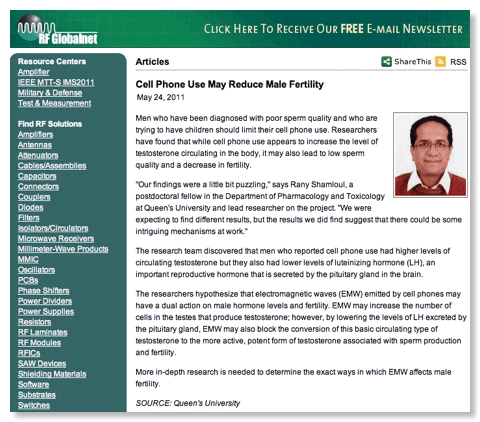
Note that this is not from some “tree hugging” environmental group or antitechnology group, but is the most popular story today on an advertiser-supported wireless “techie” website RF Globalnet.
keitai straps:
Japan's Creative Aftermarket for Cellphones

A phone strap, cell phone strap, or mobile phone strap, was originally a string or loop to help the user hold their cell phone, which was invented and became popular in Japan where they are known as "keitai straps" (携帯ストラップ) in Japanese. Phone straps have now become a cultural phenomenon beyond their basic utilities, and they may be decorated or themed with famous characters such as animation heroes or Hello Kitty. Phone straps may also have additions to add additional functions such as detecting ghosts, carrying medicine pills or mobile gardening.

They appeal greatly to teenagers in Japan but are found on most cellphone regardless of the age or gender of the owner. The one at the top is more appropriate for a man, while the ones at left would be for a teenager. Surf over to strapya-world.com for an English website that sells these irresistible toys for your cellphone.
LightSquared/GPS:
The Craziness Continues on Both Sides
The article describes the May 26th RTCA Executive Summary of a report entitled “Assessment of the LightSquared Ancillary Terrestrial Component Radio Frequency Interference Impact on GNSS L1 Band Airborne Receiver Operation”. RTCA describes itself as “a private, not-for-profit corporation that develops consensus-based recommendations regarding communications, navigation, surveillance, and air traffic management (CNS/ATM) system issues.” It is also an advisory committee to FAA. (I believe that in ancient history is was an advisory committee to both FCC and FAA.)
While the study concludes that LightSquared use of 1526.3 –1531.3 MHz “is compatible with aviation GPS operations for all the representative scenarios” - a point omitted in the PR-driven Post article, the study “ concludes that the current LightSquared terrestrial authorization would be incompatible with the current aviation use of GPS, however modifications could be made to allow the LightSquared system to co-exist with aviation use of GPS”.
Rather than filing this report in the FCC docket, RTCA is selling it for $150! So if you want to know how they reached this conclusion, you have to “pay to play”.
Since LightSquared has never publicly described their antenna pattern or antenna siting rules, one can only assume that RTCA, like Garmin, just assumed a 33 dBw isotropic radiator - that is, an antenna radiating about 1500W in all directions. Now neglecting the fact that it is impossible to build such an antenna in the real world, nobody uses anything near isotropic antennas in the mobile radio world and the 33 dBw was clearly intended as the maximum eirp in any direction, not the typical eirp.
So RTCA could not wait until the completion of the joint receiver testing to blast its own conclusions based on incomplete information on LightSquared’s actual antennas.
But as shown at right, LightSquared is showing that it can avoid the technical issues also and focus on PR. Several days last week they had full page ads in the Post extolling the benefits of their system: “Wireless broadband for all”, “15,000 new jobs”, “Connecting underserved rural America”, etc. Never mentioning that there was a serious technical spectrum controversy underway, indeed one of the most complex spectrum issues in that past decade. So like the GPS community, they are investing heavily in PR when perhaps they should be focusing more on the technical issues at hand.
Both FCC and NTIA have technical advisory committees that could be used to review some of the technical issues involved. But both the FCC’s TAC and NTIA’s CSMAC seem to be mainly composed of vested interests in major telecom companies with a few public interest folks thrown in, not the distinguished members one sees on the Defense Science Board or the Air Force Scientific Advisory Board, not to mention NRC’s Advisory Committee on Reactor Safeguards. Furthermore, NTIA’s testing of GPS receivers certainly must have included military units whose performance is of necessity classified. CSMAC is not set up to deal with classified information although it certainly should not come as a surprise that some NTIA regulated systems have classified performance data.
But more importantly, neither FCC nor NTIA have ever tried to ask their technical advisory committees for information on ongoing policy issues like other technical regulatory agencies do. These were issues raised in the IEEE-USA June 2008 letter to Chmn. Martin that was never answered. Maybe it is time for FCC and NTIA to review their resources for dealing with difficult spectrum problems such as this one.
New WHO Finding on Cellphones: Will CTIA Let FCC Take a More Proactive Stand?
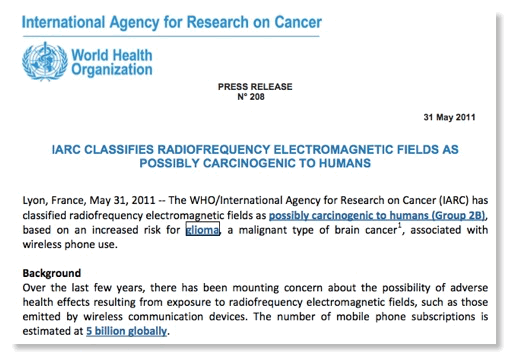
Today the World Health Organization’s International Agency for Research on Cancer (IARC) released the above statement on a possible connection between “wireless phone use” and cancer.
CTIA’s ever quotable John Walls responded,
“Today, an International Agency for Research on Cancer (IARC) working group in Lyon, France categorized radiofrequency fields from cellphones as ‘possibly’ carcinogenic based on ‘limited evidence.’ IARC conducts numerous reviews and in the past has given the same score to, for example, pickled vegetables and coffee. This IARC classification does not mean cellphones cause cancer. Under IARC rules, limited evidence from statistical studies can be found even though bias and other data flaws may be the basis for the results.“The IARC working group did not conduct any new research, but rather reviewed published studies. Based on previous assessments of the scientific evidence, the Federal Communications Commission has concluded that ‘[t]here’s no scientific evidence that proves that wireless phone usage can lead to cancer.’ The Food and Drug Administration has also stated that ‘[t]he weight of scientific evidence has not linked cellphones with any health problems.’”
CNN posted the following video on the issue:
Your blogger agrees with the tone of the CNN video. There is no need to “freak out”, but we should try to reduce exposure in reasonable ways. This is something that has been proposed here several times along with references to to the proactive stance of CTIA’s French counterpart.
Unfortunately, CTIA and its members are still stonewalling behind the viewpoint that since cellphones meet all present federal standards, nothing else is needed. Industry sources tell your blogger that this is based in part on trying to limit industry liability if health problems are later found. I hope the public finds that reassuring and is glad to know that FCC supports CTIA’s parochial interests in this matter.
In Defense of the New FCC Website
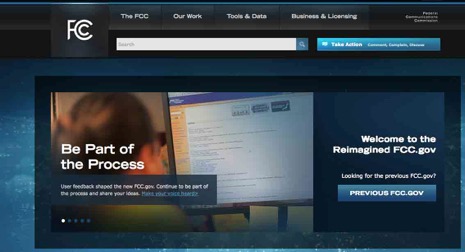
Readers of this blog know that the problems of the FCC website have been a recurring theme. I have been quite critical of the “yellow design”. Yet until now I have not commented on the new “blue design”, except for the relatively minor FCC seal issue - since resolved.
The website has a public feedback section and many posters have been quite critical. Here are some quotes:
The new site looks very pretty, but unfortunately it appears to have been designed by graphic designers and not by anyone who actually uses the FCC's site.
Those of us who live at this site prefer the old way with everything right there. This new site is too "consumerish" and is great for Mabel Brown from Squattingpigeon, MO who is visiting the website to complain about getting calls at 2 in the morning despite her insistence that she's on the "do not call" list.. This new site (IMHO) disenfranchises the professional user.
The only way to improve this site is to bring back the old one. This new web site is just awful. It's too hard to find anything, even a simple search for a broadcast station. What a waste of taxpayer money.
Looks like a used-car sales-pitch; go back to what you had and add functionality. This looks like a site for spinning what the FCC wants to sell the public rather than a legitimate government portal to involve the public in governmental decision-making.
Very difficult to navigate as you not only moved the "stuff", but you renamed it! I spend over an hour trying to use the license "search" feature, and finally went back to the old site and found what I need in a few minutes.
The purpose of a government website such as this is not to cater top those of us who live and work “inside the Beltway” and are card carrying FCBA members. The purpose is to serve the public which includes both FCBA members and “Mabel Brown from Squattingpigeon, MO”.
Does one need to know the difference between ECFS and EDOCS in order to find public information at FCC? Does one need to know that the “Universal Licensing System” is only “universal” for the universe of WTB? Pity on anyone outside the Beltway who wants to know about or contribute to the GPS/LightSquared controversy which is hidden away on “MyIBFS” under “File Number = SATMOD2010111800239”.
The status quo ante may have been good for FCBA members who “paid their dues” but did not serve the public interest. That said, I have trouble seeing the need for multiple videos on the home page.
But the Commission has announced MyFCC which will allow people like fellow FCBA members to get directly to the information they seek. They also have be good at seeking feedback and making it public. Finally, the old “yellow design” is both still operational and prominently linked to the new design during the phase in. I think the long term scenario is that insiders will use MyFCC most of the time and those “outside the beltway” will get a site they can use too. We are not there year and feedback to the feedback page is the best way to make your voice heard.
New ex parte Rules Now in Effect
In honor of the effective date, the Commission released a 72 minute video, linked to the above photo of an FCBA workshop on the new rules that clearly explains them.
The Commission has never taken any enforcement action in this area in more than 30 years! The new rules are more practical and GC Schlick promises enforcement action. However, he also talks about the delegation of authority to EB to issue NALs/fines for violations. While fines sound appealing, the R&O adopting the new rules never really explains how such fines are within the FCC’s jurisdiction. In particular, fines are authorized by Section 501 and 502 of the Communications Act. 501 deals with things required or prohibited by the Act and 502 deals with “rules ...made or imposed by the Commission under authority of this chapter”. Never having attended law school, I never the less doubt if a violation of these particular rules fits into either category. I recall that for years FCC threatened fines for violations of Part 68 when it clearly had no legal authority to do so.
So we will see if FCC follows up on its promise to start enforcement. And if they do so we may soon see a legal test of whether fines are a valid weapon here.

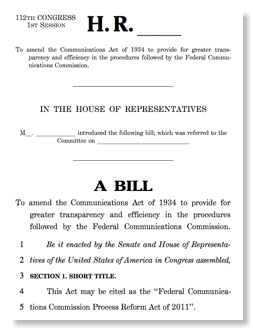


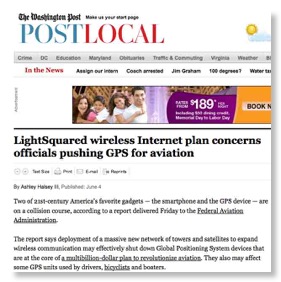

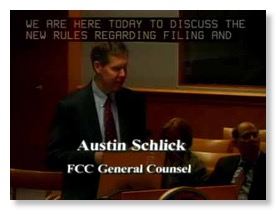


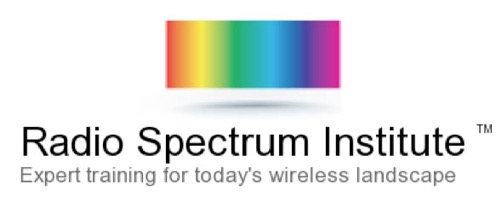


![Validate my RSS feed [Valid RSS]](valid-rss-rogers.png)

